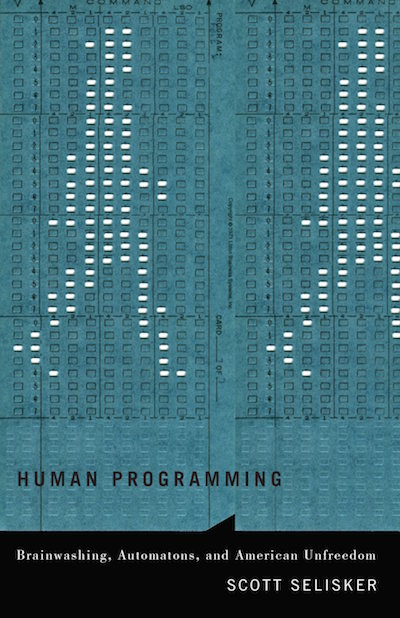Research
I research the relationships between science and technology, aesthetics, and politics in U.S. culture. I’ve just published a book on the idea "human programming" in U.S. culture, and I’ve begun a second, partly digital project on network forms in contemporary fiction and U.S. culture.
Human Programming: Brainwashing, Automatons, and American Unfreedom
The book traces the circulation of this human automaton image from World War II to the War on Terror. We see images of involuntary movement and programmable minds in World War II propaganda, in films like Invasion of the Body Snatchers (1956; 1978; 2007) and The Manchurian Candidate (1962; 2004), in Stanley Kubrick’s “Dr. Strangelove” character, and even in discussions of video footage in Patty Hearst’s 1976 trial. Because the abstract ideal of American freedom is so difficult to represent, images of mental unfreedom can reveal the shifting career of freedom as an idea and an ideal in U.S. culture, across the political spectrum. When, like other homegrown terrorists in the War on Terror, “American Taliban” John Walker Lindh was referred to as “brainwashed” in U.S. news media, that metaphor marked the act of fighting against America as literally unthinkable, even for Walker Lindh himself. When Showtime’s Homeland (2011–) explores the dynamics of brainwashing, post-traumatic stress disorder, and torture through Brody’s character, it asks similar questions about mental unfreedom and the limits of community in the contemporary U.S.
You may have access to library ebook versions through Project Muse and/or EBLib. Paperbacks are available directly from the University of Minnesota Press, and paperback and ebook editions are available through Amazon, Barnes & Noble, or your preferred independent bookseller.
I talked about the book for exactly 90 seconds on WAMC Public Radio’s Academic Minute and for about an hour with Carl Nellis of the New Books Network. The Los Angeles Review of Books ran a review last fall entitled, “No Mind to Lose: On Brainwashing.” In 2017, the book received an honorable mention for the Science Fiction and Technoculture Studies Program Book Prize from UC Riverside at the Science Fiction Research Association, and it was one of four finalists for the Kendrick Memorial Book Prize from the Society for Literature, Science, and the Arts.
Networks
I am also working on a second project that explores the roles of networks in contemporary culture and thought. I’m interested both in how contemporary novelists model networked social forms within fiction, including work by Daniel Suarez, G. Willow Wilson, Dave Eggers, Jennifer Egan, and Karen Tei Yamashita. A recent essay in New Literary History connects the popular “Bechdel Test” to theories of character networks and of networked agency. An article on how contemporary fiction models privacy as a function of social networks is in progress.
Other Projects
I’ve been working on other projects in literature and science, digital humanities, and humanities outreach both at Arizona and at previous institutions. At the University of Virginia, I designed the site architecture and interactive features on the widely used writing pedagogy website, Grounds for Argument, then directed by Greg Colomb, Jon D’Errico, and Ryan Cordell. At UCSB, I co-organized a colloquium on Mediating the Nonhuman at UCSB that led me to write an article which appeared in Science Fiction Studies, on questions of scale and aesthetics related to genetically modified organisms in Paolo Bacigalupi’s science fiction novel, The Windup Girl (2009). At Arizona, I’ve helped to organize science fiction film screenings and panel discussions at Biosphere 2 and The Loft Cinema, and I’m also affiliated faculty with the School of Information.
